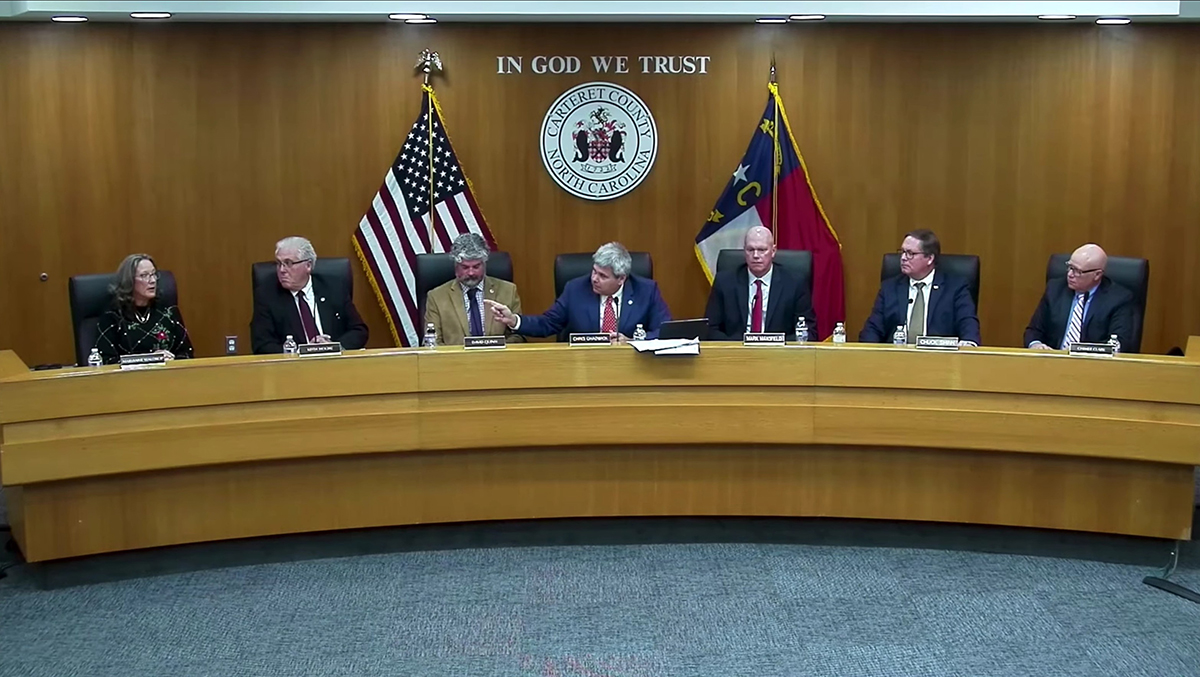Topsail Island towns are banding together to dramatically reduce the presence of an invasive plant that chokes out native vegetation on oceanfront dunes.
Beach vitex, a thick, woody vine that sheds its leaves seasonally, is growing on more than 170 properties spanning the three towns on the 26-mile-long barrier island.
Supporter Spotlight
Those properties were identified in what has been described as a cursory, “windshield” survey conducted to give officials an idea of where and how much of the plant is on the island’s oceanfront dunes.
“We know there’s more out there,” said Topsail Beach Assistant Town Manager Christina Burke.
The survey provided enough information for that town, North Topsail Beach and Surf City to jointly apply for a North Carolina Coastal Storm Damage Mitigation Fund grant.
In May, the North Carolina Department of Environmental Quality’s Division of Water Resources awarded those towns a collective $690,060.50, enough to cover half of the total projected cost of the first two years of what will be a four-year project.
According to the interlocal agreement, the towns “will continue to work together to secure additional funding to carry the project out to completion.”
Supporter Spotlight
Each town will be responsible for matching its portion of the grant.
North Topsail Beach last week joined Surf City in adopting an interlocal agreement that sets the terms for the aptly named Topsail Island Vitex Eradication Project.
Topsail Beach commissioners are expected to consider the agreement at their meeting Wednesday evening.
If the board greenlights the agreement, a resolution to accept the grant funding will be put to a vote most likely next month, Burke said.
The idea is to put out a request for proposal, or a formal document asking for contractor bids, by either December or January.
Topsail Beach agreed to be the fiscal agent to administer the grant funds, which are the culmination of a partnership initiated by the Topsail Island Shoreline Protection Commission.
The commission functions as a collaboration to preserve the beaches and surrounding waterways of the barrier island and is made up of elected officials and local government appointees from each town and Onslow and Pender counties.
Commission members began a couple of years ago discussing the need for an island-wide project to tackle eradicating the invasive plant that has wound its way over and along oceanfront dunes in the Carolinas after being introduced to the Southeastern United States in the mid-1980s.
But what was originally planted for ornamental purposes and sand dune stabilization escaped cultivation, crowding out sea oats, American beachgrass, seaside panicum and other native plants, ultimately threatening endangered loggerhead sea turtle nesting habitat, federally threatened seabeach amaranth and other rare plants and animals.
The state initiated efforts in 2005 to document locations of beach vitex and control its spread by creating the NC Beach Vitex Task Force in February of that year.
“Knowing it’s an invasive species and threatening to the dune system and the ecological system that we have here, the turtles, we decided to do something about it,” Burke said.
Based on the survey, Topsail Beach has the most properties – 93 – where beach vitex is present. Surf City has 45. A total of 35 properties were noted to have the plant in North Topsail Beach.
“That is just so incomplete still,” Burke said.
Eradicating beach vitex can be a rather painstaking process, one that requires a scratch-and-dab method where the bark of a vine must be scratched off before an herbicide can be applied.
Glyphosate, a systemic herbicide that blocks an enzyme essential for plant growth, is a chemical commonly used in killing beach vitex.
Beach vitex usually requires a couple of treatment applications, after which the plant must be monitored to ensure it is dying back. Treatment must occur only in summer.
“You have to kill it first and then you have to cut it out,” Burke explained.
Precautions must be taken when removing dead beach vitex to ensure seeds do not fall from the vines onto the ground and recultivate.
Treating the 93 properties in Topsail Beach alone is expected to cost an estimated $584,000.
The Topsail Island Shoreline Protection Commission will provide up-to-date information on its website as the project moves forward and continue efforts to educate property owners about the pesky plant.
Property owners will receive a waiver to sign off on that will the contractor to access individual lots to begin treatment, Burke said.
“They see all this lush vegetation and they’re like, oh my gosh, look at my dune system, it’s great, it’s so healthy. I think with the education of vitex and how dangerous it is to the dune system, people are going to me more apt to allow us to come in,” she said. “We have people who call us that say, please put me on that list, I have vitex and I want to be part of this project so I think the attitude has changed with the education of vitex.”







